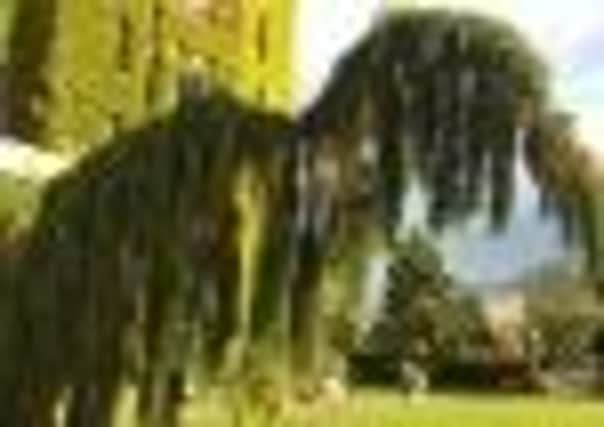Land of the giants


Which is what many a person has done (metaphorically speaking) to this beauty, one of two which stand guard outside the imposing entrance of the stupendous Fairmont Empress hotel, in Victoria, British Columbia.
This is Sequoiadendron giganteum ‘Pendulum’, a slow-growing form of the mighty Sierra redwood, and which, with a bit of imagination, can be persuaded to grow into a sort of tree-like dinosaur.
Advertisement
Hide AdAdvertisement
Hide AdSequoiadendron giganteum (giant sequoia, Sierra redwood, Sierran redwood, or even Wellingtonia) is a monster of a tree which became something of a rage in Victorian times when those with plenty of money and plenty of land decided they had to have at least one specimen to wow their friends and guests.
Not surprisingly, the fad died pretty quickly.
Giant sequoias are the world’s largest trees in terms of total volume. They grow to an average height of 50-85 metres (160-279ft) and 6-8 metres (20-26ft) in diameter.
Nowadays, they are few and far between in their native United States (they grow naturally only in groves on the western slopes of the Sierra Nevada mountains of California) so the Americans, God bless ’em, have taken to christening individuals. Which is why we have General Sherman, which weighs in at 2,100 tonnes, and General Grant, which stands more than 260ft tall and has a girth of more than 100ft.
Not to be outdone, one unnamed tree is more than 300ft high and another is estimated to be more than 3,500 years old.
Advertisement
Hide AdAdvertisement
Hide AdThe giant sequoia was first cultivated in Britain in 1853 by Scotsman John D Matthew, and the trees took readily to our climate – the tallest specimen, at Benmore, in south-west Scotland, was 177ft tall when it celebrated its 150th birthday.
The “dinosaur” in the photograph is obviously far smaller because ‘Pendulum’ grows much slower than its mightier cousins. Still, it’s not a tree for the average garden. Best see it in situ, although it may mean a journey of several thousand miles. A small price to pay to see something so spectacular.